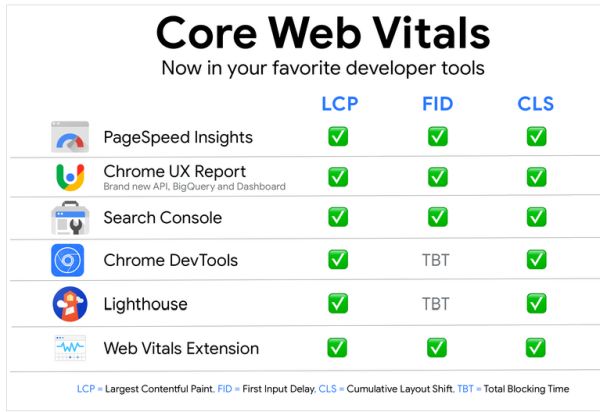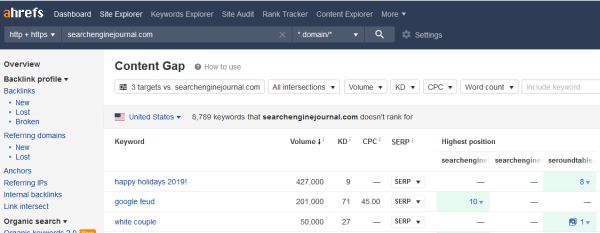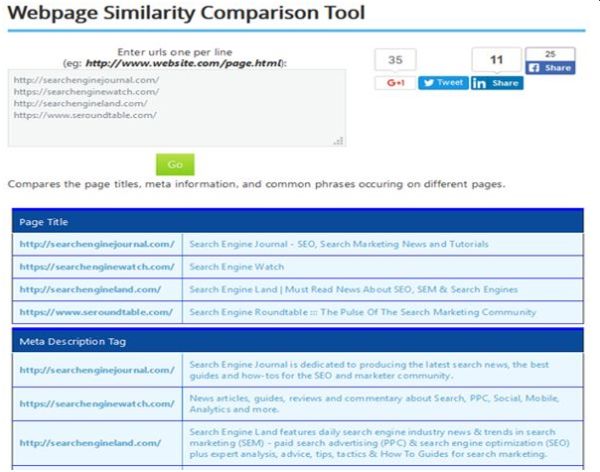As challenges and obstacles to reaching the top of the SERPs and staying there have continued to grow, competitor analysis has become more important than ever.
Although Google webmaster guidelines haven’t changed much over the years, the core algorithm certainly has.
What’s more, the evolution of that algorithm is happening at a much faster pace.
The introduction of Knowledge Graph, Hummingbird, RankBrain, and BERT into the Google algorithm has made it much harder for SEO professionals to game the system.
I expect it will take nothing short of an act of Congress for Google to release its algorithm to the public.
And let’s face it – the algorithm is far too complex to reverse engineer.
With that said, you can still find common patterns by digging into competitive research.
These patterns give us some insight as to what the algorithm is looking for when determining what results to return for a particular query.
At the most basic level, a website can be broken down into three components:
- Technology
- Content
- Backlinks
Here are three ways to compare your site to your competitors to see where you could improve your SEO.
1. Evaluate Competitors’ Website Technology
Every webmaster’s goal is a well-structured website that is fast, easy to use, and easy to crawl.
You don’t need a specific technology to accomplish this, but if you’re starting with a new site or considering a redesign, it’s certainly worth checking out the competition.
My favorite resource for this is BuiltWith.
They provide a series of technology profiles, including information on:
Advertisement
Continue Reading Below
- Analytics and tracking.
- Widgets.
- E-commerce.
- Frameworks.
- CDN.
- Mapping.
- Mobile.
- Payment.
- A/V Media.
- CMS.
- JS libraries & functions.
- Advertising.
- Verified links.
- SSL Certificates.
- Web hosting providers.
- Name servers.
- Email hosting providers.
- Web servers.
- Operating systems & servers.
- Syndication techniques.
- Webmaster registration.
Website Architecture
Understanding your competitors’ website architecture can be useful in terms of establishing parent and child page hierarchy as well as discovering a potential product or content gap.
The best and easiest way to determine this is by creating a competitor analysis sitemap.
There are several great sitemap tools available, but if you want a free tool that has stood the test of time it’s hard to beat Xenu Link Sleuth:

Core Web Vitals
Google is moving beyond just page speed as a ranking factor. Beginning in May 2021, Core Web Vitals will become a ranking factor.
Advertisement
Continue Reading Below
According to Google, this “initiative provides unified guidance about quality signals that are essential for all sites to deliver a great user experience on the web.”

2. Perform Competitor Analysis on Website Content
Organic Keyword Research
Developing the right list of keywords is still important. Chances are pretty good that your competitors have already invested a lot of time in developing an amazing keyword strategy.
Don’t let all that hard work go to waste. Use this competitor analysis to drive traffic to your site.
Advertisement
Continue Reading Below
My tool of choice for competitor organic keyword research is Ahrefs.
They have a large database of search rankings by website. They also make it easy to determine which phrases drive traffic and their potential for ranking.

In addition to listing keywords and rankings, they also list top pages.
Better still, they include the number of keywords that a particular page ranks for as well as a list of those phrases:

It’s quite common to find a single page, like those above, ranking for hundreds (or even thousands) of related keywords. It can be much more efficient to concentrate on creating a better version of a top-performing page than to focus on a single keyword or phrase.
Advertisement
Continue Reading Below
One question in the back of nearly every webmaster’s mind is, “What opportunities are being missed?”
What are competitors ranking for that you are missing out on? That doesn’t need to remain a mystery.
Just plug your competitors into the Content Gap Tool, as shown below:

You have the option of filtering to:
- Show keywords that any of the targets rank for, but you don’t.
- Show keywords that at least two of the targets rank for, but you don’t.
- Show keywords that all the targets rank for, but you don’t.
This is a great way to find both highly relevant keyword opportunities as well as some potentially new business opportunities.
Advertisement
Continue Reading Below
On-Page Optimization
Google may not be as dependent on meta tags since the introduction of Knowledge Graph, but having a clear roadmap for both users and search engines is still important.
One way to see how your pages stack up against the competition is by using SEOBook’s free Webpage Similarity Comparison Tool:

This tool outputs a comparison of:
- Page title.
- Meta description tag.
- Keywords (good for competitor intel, not so much for SEO).
- Text and word count.
- Top two- & three-word keyword phrases.
The most effective way to use this tool is to look for patterns.
Advertisement
Continue Reading Below
In this case, each title tag leads with the brand and includes mentions of SEO and search marketing in at least two of the three pages with optimized title tags.
Some would argue this makes you the same as everybody else. That may be true but if that’s what Google is rewarding, I’m OK with that.
3. Analyze Competitor Backlinks
There was a time when SEO professionals would chase after every backlink a competitor had, in order to neutralize the advantage that link might provide.
That all changed with the introduction of Penguin in April 2012.
Links that once held zero value suddenly had a negative value. All of those garbage links acquired through indiscriminate backlink mining became dangerous to have in a link profile.
Penguin 4.0 is much more forgiving, but who knows what the future may bring?
That doesn’t mean competitor backlink mining is a bad idea.
It just means you need to use your head and “score” prospective links to determine if they are worth the necessary effort to acquire.
Advertisement
Continue Reading Below
(Pro tip: If no effort is necessary, the result is almost never worth getting.)
Once again, I find the Ahrefs Link Intersect tool to be highly effective in mining competitor links.
(For the record, I have no affiliation with Ahrefs except for a paid subscription.)

The tool offers two different filtering options:
- Show who is linking to all targets.
- Show who is linking to any of the targets.
Final Takeaways on Competitor Analysis for SEO
Content and links will continue to be the backbone of Google’s algorithm for some time.
Advertisement
Continue Reading Below
Understanding what you are up against and neutralizing any competitive advantage is an important step when developing an effective marketing campaign.
Follow that up with the development of unique and useful content and nothing can stop you from ruling the SERPs!
More Resources:
Image Credits
All screenshots taken by author, December 2020


